TS ECET Mining Engineering syllabus 2024 consists of topics from elements of mining, opencast mining, mining geology, and more. The exam will be of 200 marks. 100 questions from Mining Engineering. 50 questions from Mathematics. 25 questions from Physics and Chemistry, respectively.
Table of Contents
- TS ECET Mining Engineering Syllabus 2024
- TS ECET Mining Engineering Syllabus 2024 for Mathematics
- TS ECET Mining Engineering Syllabus 2024 for Physics
- TS ECET Mining Engineering Syllabus 2024 for Chemistry
- TS ECET Mining Engineering Syllabus Question Pattern
- Preparation Tips for TS ECET Mining Engineering Syllabus 2024
TS ECET Mining Engineering syllabus 2024 includes mining geology, mine development, mine surveying, mine machinery, opencast mining, mine transportation & mining machinery, rock mechanics, elements of mining and more.
The exam tests the candidates' knowledge and skills in the mining engineering field. It assesses their ability to apply theoretical concepts in practical situations.
Candidates interested in pursuing a career in the mining industry can take this exam and gain admission into reputed colleges.
TS ECET Mining Engineering Syllabus 2024
There are 100 questions from Mining Engineering. TS ECET Mining Engineering Syllabus 2024 is discussed in the points below. Candidates must know the entire syllabus to crack the exam.
| TS ECET Mining Engineering Syllabus PDF 2024 | Download Now |
Also Check: TS ECET Pharmacy Syllabus 2024
Unit-I: Elements Of Mining
- Definitions: Mining Terms and their operations, Indian Mineral resources and world status, Mineral based industries, Mining operations, modes of entry, shaft, incline, adit-applicable conditions, Mining Methods used in coal and Non-coal mining, Classification of the mineral deposits based on various factors, classification of coal seams based on various factors. Classification of methods of working-U/G Coal, OC Mining, Placer, horizon, hydraulicking, dredging, and Leaching.
- Drilling Methods: Uses, classification, the principle of working and various tools used in drilling, feed mechanism, core recovery, deviation of boreholes, flushing methods and borehole survey.
- Explosives: Characteristics, classification, composition, properties, different explosives used in U/G, OCM, Metal and coal mines, selection of explosives and initiation of explosives, Detonators types, Blasting practice in Mines- terms, tools, sequence of shot firing, drill patterns types, misfires, blown out shots, sockets, treatment of misfires dangers associated with underground blasting, precautions to be taken before and after blasting – fuse – electric blasting.
- Mine Gases: Composition of atmospheric air and mine air, the reason for changes. Classification of mine gases, types, physical and chemical properties, physiological effects and occurrence, permissible limits and methods of detection. Flame safety lamp-purpose, principle constructional details of the bottom, top feed types- method of heat transfer, accumulation and percentage test, different detectors.
- Shaft sinking methods: Purpose, uses, factors for selection of site, sinking through normal strata, Special methods of shaft sinking - pilling, drop shaft method, widening and deepening– modern trends, cementation, freezing method. The temporary, permanent lining of shafts.
Unit-II: Mining Geology
- Definitions: Geology, scope, uses of geology in the Mining field, Branches of geology, Age of the earth and its determination methods origin of the earth-Nebular hypothesis of Kant and Laplace.
- Physical Geology: Internal structure of the earth, weathering, erosion, denudation, Attrition, Abrasion, Geological work of wind, river and their end products. Earthquakes, their propagation, intensity, causes and effects of earthquakes.
Volcanoes and their classification. - Mineralogy: Physical characteristics of minerals, important mineral families, industrial uses of important minerals; Occurrence and distribution in Telangana and India.
- Petrology & Structural Geology: Classification of Rocks and its characteristics, structures and textures. Structural Geology, folds, faults, joints, unconformities. Geological time scale, major stratigraphical divisions of India, Physio-graphic divisions of India, Economic minerals occurring in the systems (archaeans, cuddapha etc.)
- Economic Geology: Terms, processes of mineralization and important economic minerals formed by these processes, resources proved, probable & possible reserves.
- Geological prospecting: Objectives, guidelines for the location of mineral deposits in fields, methods of prospecting, and Geophysical methods.
- Fuel Geology: Periods of coal formation, stages of coal formation, the origin of coal seams, drift and in situ theories, structural features of coal seams, distribution of coal seam in India, and Telangana state. Petroleum origin, migrations, and accumulations, distribution of oil fields in the world and India.
- Hydrology: Occurrence, source & distribution, water table & types of groundwater, hydrological cycle, rainfall measurements and records. Factors controlling evaporation. Factors affecting infiltration. Zone of saturation and aeration. Water-bearing properties of rocks.
Unit-III: Methods Of Working Coal
- Bord and Pillar: Applicability –merits – demerits – different terms – stages of development and de pillaring – panel system –types –applicability- factors influencing this size of panel – general considerations- number of opening of panel-merits, demerits – factors governing the selection of the development method -opening of districts, different methods of development systems, along dip along strike, cross cuts, steeply dipping seems loading machines and continuous miners, blasting of solids, different conveyers, coal cutting machines LHD, SDL depillaring, terms – classification-planning preparation arrangements – sequence of operations – pillar extraction under week roof mechanized method of pillar extractions by LHD, SDL – conveyor systems – size, shape of pillar, ribs– local fall – main fall-air blast, dangers precautions- stowing- methods conditions for adoption of stowing - H/L ratio, preparatory arrangements for stowing- stowing panel- danger and precautions while working below goafed areas- contiguous seams extractions precautions against fire during and after depillaring.
- Longwall mining: Drivage of roadways by manual method, road header, dint header. Longwall advancing- applicability, merits, demerits, limitations comparison between long wall retreating and advancing, the machinery employed- factors governing the length of long wall face, layout conventional longwall face, advancing with caving and stowing – layouts of mechanized long wall face advancing with caving and stowing comparison with bord and pillar- production calculation – long wall retreating method – applicability –layout of mechanized /conventional long wall with caving and stowing, the layout of longwall face with shearer – methods of sumping – method of push, salvaging-productions calculations. Coal plough and its operation.
- Blasting gallery method: Applicability, merits, demerits, limitations – drilling – blasting pattern – loading operations – supporting – spacers - precautionary measures at goaf edge line development of BG panel - mechanized layout of BG panel-production calculations thick seem mining.
- Thick seam mining by slicing: Difficulties-methods- applicability inclined slicing, horizontal slicing, with caving and stowing, sublevel caving with mechanized long wall - horizon mining. Merits - demerits applicability, limitations.
- Hydraulic mining: Applicability-merits and demerits - Hydraulic breaking of the coal-transport layout of Hydraulic mining in moderately thick and steep seems.
- Gasification of coal: Applicability – merits –demerits – the principle of Gasification-opening of coal seams with gasification, linkages bore holes in gasification of coal, Stowing practice in mines.
Unit-IV: Opencast Mining
- Surface mining definitions: Different forms-geo mining situations, major coal and metal Opencast - limitations-merits and demerits- different terminology with sketches-stages of surface mining– Equipment-machinery for preparing the ground, dozed scraper, ripper, road grader, road rollers-classifications of dozer, components - functions, operations- classification of rippers - road grader main components functions and operations classification of road roller, components functions and operations.
- Drilling and blasting in OC mines: Classification of drill holes – vertical and inclined drilling – merits-demerits various parameters-drill parameters-application- estimation of charges for blasting round of holes, blasting tools-shot firing procedure-patterns-blasting techniques –transportation storage –charging of bulk explosives- use of NONELS- electronic detonators, boosters firing procedure –use of bulk explosives.
- control blasting techniques –applicability-conditions for adopting sleeping holes – secondary blasting techniques – dangers due to blasting in OC mines preventive measures.
- OC machinery: Selection-classification of HEMM - application –Excavators used in open cast mines –all types of excavators-shovel-dragline – BWE-surface miner applicability’s merits demerits etc.-All types of the transport system in opencast mines-dumpers, belt conveyors – rail pipeline-high angle conveyor – types -the merits-demerits-applicable condition of input crusher technology spreaders-working, operating parameters of shovel dragline swell factor, Bucket fill factor, swing factor, cycle time, loading time, problems on HEMM.
- Various layouts of opencast mines: Design factors of layout- different combinations layout – shovel dumper, dragline, surface miner, bucket wheel excavator.
- Impact on environment and ecology in OC mines: Terms- various pollutions (water, air and land) –causes- preventive measures relationship between ecology and environment, EIA, EMP, land reclamation, slope stability.
Unit-V: Rock Mechanics And Strata Control
- Introduction: Definition of rock mechanics - Scope of Rock mechanics in mining- Application of Rock mechanics to mining field Stress Strain-Modulus of elasticity-Relation between various Modulus of elasticity-Terms Insitu stress -Induced stress -simple numerical problems.
- Stress Analysis, Stress distribution in the underground: Various forces acting on block in Insitu condition, Relation between vertical and lateral stresses -Induced stresses due to Mining - Principle plane- Major Principal Stress, Minor principle stress-Diagram normal and shear stresses in a 2D model stress distribution around a Mine working, narrow and wider openings-Mohr's circle simple numerical problems on lateral strain- Mohr's circle
- Physico Mechanical properties of Rocks and methods of determination Rock properties: Physical Mechanical properties of rocks uni-axial compressive strength – confined compressive Strength (Tri axial test) -Tensile strength shear strength - strength indices of rocks - point load strength index protodyakonov's strength index - porosity - Relation between them - methods determining shear strength. Definition of rock mass, classification of rock stability - Give the RQD (Rock Quality Designation), Classifies Rocks by Mohr's Hardness scale, Give the RMR (Rock mass rating), factors considered for estimation of RMR, Estimation of RMR, simple numerical problems for estimation of RQD, Classification of roof rock based on RMR-Tunnel Quality Index.
- Stress measuring devices & subsidence: Instruments used for stress measurement- Flat jack method - Remote convergence recorder-Magnetic ring multipoint extensometer, tell–tale borehole extensometer. Subsidence- define terminology related to subsidence, types of subsidence, and measurements.
- Strata control Supports Necessity - Materials used - Classification of supporting Systems - Applicability of various types of supports - Size, Shape of supports - Principle of roof bolting, stitching Merits and demerits of bolting - Rigid and Yielding props constructional details of Friction, Hydraulic props - Method of setting Various supports at different situations - Fore poling. safari supporting- Junction Supports - Clearance of Heavy roof Collapse - Systematic Supporting - withdrawal of supports.
Unit-VI: Mine Transportation & Mining Machinery
- Wire ropes: Usage, chemical composition, tests of wires, classification, the applicability of different wire ropes, causes of deterioration and precautions, selection parameters- numerical problems on size-weight and strength,
- Capping, recapping: Methods and rope splicing, description Transportation in mines - classification different types of rope haulages, their applicability, merits and demerits limitations. Safety devices in different rope haulages, laying and maintenance of the track. Factors of a section of rope haulage computation of problems for HP, rope size, breaking strength, tub capacity, number of tubs, tensioning arrangement of endless rope haulage.
- Conveyors: Classification of conveyors and construction safety devices merits demerits limitations and solves numerical problems on size and output motor HP.
- Locomotive haulages & Arial ropeways: Types, applicability‘s, merits-demerits, classify aerial ropeways, applications, simple problems.
- Mine Pumps: Terms, classification types of pumps, fittings, merits-demerits, limitations, selection-problem on the head, quantity HP, frictional losses, their applicability in mines, construction details merits, demerits and limitations.
- Coal face machinery: Different Drills, Power loaders, Longwall face machinery - AFC, lump breakers, stage loaders, power pack, SERDS, DERDS, safety devices, power support, Flameproof apparatus and Intrinsically safe apparatus- field of applications, features, remote control principle,
- Signalling: Various methods of signalling in mines and telephones.
- Winding: Purpose, equipment, types of headgear frames, shaft fittings, guides, Pit top and pit bottom arrangements, keeps, suspension gear, types of drums, drum and skip winding, Cage winding and Friction (Keope Winding) speed control and safety contrivances. Breaks, types, speed control methods, mining cables-classification, types, constructional details-cable jointing, care and maintenance.
Unit-VII: Mine Surveying
- Preliminaries of Surveying: Definition and objectives of surveying, primary divisions, classifications, and the principle of surveying. To know the difference between plan and map, the importance of scale and representative fraction, general requirements of mine plans, and care and maintenance of plans and sections according to mining laws.
- Basics concepts linear measurements (chain and tape): Perform Different objectives of chain surveying, Ranging, Cross staff survey, Plotting the chain triangulations for measuring the areas, corrections in chain surveying and simple problems on it.
- Concepts of angular measurements (compass surveying): Introducing the concepts of angular measurements with the adoption of compass surveying, differences between angle and bearing, terminologies and parts of a prismatic compass, solving the problems of bearings and angles and also introducing the concepts of the traverse. Errors and its distribution of a closed traverse.
- Levelling: Learning the concept of elevations and depressions of the ground surface by introducing the different methods of levelling, the definition of different terms in levelling, and brief lines about the dumpy level and inverted staff. Importance of reduced levels and problem on it by different methods, definitions of curvature and refraction, problem-solving on reciprocal levelling, and importance of HFL and contouring.
- Theodolite survey: Concepts of angular measurements with the adoption of theodolite surveying, different terminologies used in theodolite and its parts, measurements of horizontal and vertical angles and introducing the concepts of repetition and reiteration methods. Rectangular Coordinates- latitude and departure – problems on Rectangular Coordinates –Areas – Bowditch Rule.
- Setting out Curves: Classification – Definitions – elements of the simple curve – Method of setting out curves – by chord and offset –chard and angle – solves the problem.
- Correlation Survey: Purpose – methods of correlation – Direct Traversing – Co – planning – Weisbach Triangle.
- Tacheo meter: Purpose – methods of correlation – Direct Traversing – Co – planning – Weisbach Triangle–Problems.
- Dip, Strike, Fault problems: Definitions of Dip, Strike, Fault, True Dip, Apparent Dip-Relation among them- Solving the problems relating to them – determines the rate and direction of true dip or strike of a mineral bed- Solving the problems related to strike and fault – calculate the length of drift, passing through the fault-Bore hole problems- cross measure drift problems.
- Modern Surveying Equipment: Modern surveying Equipment- Principle of working of - EDM – GPS –advantages of DGPS – Total station Instrument – applicability in Mines. – key components of GIS – Remote sensing- Applicability.
Unit-VIII: Mine Management And Entrepreneurship
- Mine management & Entrepreneurship: Organisational structure Role of the mining Industry in the country's economic development, ownerships of Industries, Management, and organization, in the context of the mining Industry.
- Motivating factors, Risks and Rewards, Requirements of entrepreneur, products selection. Site solution. The setting of an Abraham-Maslavs theory of motivation, Leadership, Decision making process-Communication process- Market survey. Demand survey techno economic-Break even analysis- Sellers and Buyers market- Feasibility study report.
- Industrial Dispute Act-1947 and Total Quality Management: Industrial Dispute act-1947, causes of Industrial Dispute, adverse effects for Industrial Dispute various provisions of ID act works committee, conciliation officer, Bord of conciliation court of enquiry, industrial tribunal, voluntary organisation, strike and lockout.
- Recruitments and training Recruitment and training, Methods of recruitment - Essential Quality of person different category training as per VTC Rules - Training programmes.
- Network analysis and Total Quality Management: Definition and Objectives of network analysis construction of network diagrams-Definitions of various terms-Merits and demerits of CPM-Simple problems on CPM- PERT-Definition, methodology, time estimates -Simple problems on PERT Compression CPM Vs PERT. Total Quality Management Definition of TQM constituents of ISO 9000 series-Merits and drawbacks of ISO-Indian Quality 6 sigma system standards.
Also Check: TS ECET Rank Wise Colleges List
TS ECET Mining Engineering Syllabus 2024 for Mathematics
There are 50 questions from Mathematics. TS ECET Mechanical Engineering syllabus 2024 for Mathematics carries high weight, and each correct answer will fetch 1 mark.
Unit-I: Matrices
- Matrices: Definition of Matrix
- Types of Matrices-Algebra of Matrices-Transpose
- Matrix Symmetric, Skew-Symmetric Matrices-Minor
- Cofactor of an Element-Determinant of a Square Matrix-Properties-Laplace‘s Expansion-Singular and Non-Singular Matrices-Adjoint and Multiplicative Inverse of a Square Matrix-System of Linear Equations in 3 Variables-Solutions by Cramer‘s Rule
- Matrix Inversion Method-Gauss-Jordan Method.-Partial Fractions: Resolving a Given Rational Function Into Partial Fractions.
- Logarithms: Definition of Logarithm and Its Properties, Meaning of ‘e’, Exponential Function, Logarithmic Function.
Unit–II: Trigonometry
- Properties of Trigonometric Functions– Ratios of Compound Angles, Multiple Angles, Sub Multiple Angles/ Transformations of Products Into Sum Or Difference & Vice Versa.
- Properties of Triangles: Sine Rule, Cosine Rule, Tangent Rule, and Projection Rule, Solution of a Triangle When (I) Three Sides (Sss), (Ii) Two Sides and An Included Angle (Sas), (Iii) One Side and Two Angles Are Given(Saa).
- Inverse Trigonometric Functions, Hyperbolic Functions
- Complex Numbers: Definition of a Complex Number, Modulus, Amplitude, and Conjugate of Complex Number, Arithmetic Operations On Complex Numbers - Modulus-Amplitude Form (Polar Form) - Euler Form (Exponential Form).
Unit–III: Analytical Geometry
- Straight Lines–Different Forms of Straight Lines, Distance of a Point From a Line
- Angle Between Two Lines, Intersection of 2 Non-Parallel Lines and Distance Between 2 Parallel Lines
- Circles Equation of Circle Given Center & Radius
- Given Ends of Diameter-General Equation- Finding Center and Radius
- Centre and A Point On The Circumference, 3 Non-Collinear Points
- Centre and Tangent, Equation of Tangent and Normal At A Point On The Circle
- Conic Section – Properties of Parabola
- Ellipse and Hyperbola – Standard Forms With Vertex At Origin.
Unit–IV: Differentiation and Its Applications
- Functions & Limits – Standard Limits/Differentiation of Sum, Product, Quotient of Functions, Function of Function
- Trigonometric, Inverse Trigonometric
- Exponential, Logarithmic, Hyperbolic Functions, Implicit, Explicit and Parametric Functions
- Derivative of a Function Concerning Another Function-Second Order Derivatives, Geometrical Applications of The Derivative (Angle Between Curves Tangent and Normal)
- Increasing & Decreasing Functions–Maxima & Minima (Single Variable Functions) Using Second Order Derivative Only Physical Application, Rate Measure
- Partial Differentiation, Partial Derivatives Up to Second Order, and Euler‘s Theorem.
Unit–V: Integration and its Applications
- Indefinite Integral, Standard, Forms Integration By Decomposition of The Integrand
- Integration of Trigonometry, Algebraic, Exponential
- Logarithmic and Hyperbolic Functions, Integration By Substitution
- Integration of Reducible and Irreducible Quadratic Factors, Integration By Parts, Definite Integrals and Properties
- Definite Integral As The Limit of a Sum
- Application of Integration to Find Areas Under Plane Curves and Volumes of Solids of Revolution
- Mean and RMS Values
- Trapezoidal Rule and Simpson’s ⅓ Rule for Approximation Integrals.
Unit–VI: Differential Equations
- Definition of a Differential Equation-Order and Degree of a Differential Equation- Formation of Differential Equations-Solution of Differential Equation of The Type First Order, First Degree, Variable Separable, Homogeneous Equations
- Linear Differential Equation of The Form Dy/Dx+Py=Q
- Bernoulli‘s Equation, 2nd Order Linear Differential Equation With Constant Coefficients Both Homogeneous and Non-Homogeneous and Finding The Particular Integrals for The Functions Eax, Sin Ax, Cos Ax, Ax2 +Bx+C (A, B, C Are Real Numbers).
Unit–VII: Laplace Transforms
- Laplace Transforms (Lt) of Elementary Functions-Linearity Property, First Shifting Property, Change of Scale Property
- Multiplication and Division By T - LT of Derivatives and Integrals, Unit Step Function, LT of a Unit Step Function, Second Shifting Property, Evaluation of Improper Integrals, Inverse Laplace Transform (LLT)-Shifting Theorems
- Change of Scale Property, Multiplication and Division By S LLT By Using Partial Fractions and Convolution Theorem
- Applications of Lt to Solve Linear Ordinary Differential Equations Up to Second Order With Initial Conditions.
Unit–VIII: Fourier Series
- Fourier series, Euler’s formulae over the interval (C, C+2π) for determining the Fourier coefficients, Fourier series of simple functions in(0, 2π) and (–π, π), Fourier series for even and odd functions in the interval (–π, π) – Half range Fourier series – sine and cosine series over the interval (0, π).
Also Check: TS ECET Civil Engineering Syllabus 2024
TS ECET Mining Engineering Syllabus 2024 for Physics
Physics holds 25 questions in the TS ECET Mining Engineering syllabus 2024. Some topics with high weightage include elements of vectors, properties of matter, heat and thermodynamics, and mechanics.
Unit-I: Units, Dimensions, And Friction
- Physical Quantity - Fundamental and Derived Quantities Unit, Definitions, S.I Units, Advantages of S.I. Units, Dimensions and Dimensional Formula, Definitions, Units and Dimensional Formula for Physical Quantities, Principle of Homogeneity
- Applications of Dimensional Analysis, Friction, Causes, Types of Friction, Normal Reaction, Laws of Static Friction, Coefficients of Friction, Rough Horizontal Surface, Expressions for Acceleration, Displacement, Time Taken to Come to Rest and Work Done, Advantages and Disadvantages of Friction, Methods to Reduce Friction, Problems On Friction Only.
Unit-II: Elements Of Vectors
- Scalar and Vector Quantities, Definitions and Examples, Graphical Representation of a Vector, Classification of Vectors (Proper Vector, Unit Vector, Equal Vector, Negative Vector, Collinear Vector, and Position Vector), Resolution of a Vector, Triangle Law of Vector Addition, Parallelogram Law of Vectors, Statement Expression for Magnitude and Direction of Resultant Vector, Derivation Illustrations (Working of Sling and Flying Bird)
- Representation of a Vector inUnit Vectors I, J, and K, Scalar Product of Vectors, Definition, Application to Work Done By Force, Properties of Scalar Product, Vector Product of Vectors, Definition
- Right-Hand Thumb Rule and Right-Hand Screw Rule, Application to Moment of Force, Properties of Vector Product, Area of Parallelogram and Triangle in Terms of Vector Product, and Related Problems
Unit-III: Mechanics
- Projectile Motion, Definition, Examples, Horizontal Projection, Time of Flight and Horizontal Range
- Derivations, Oblique Projection, Expression for Path of a Projectile in Oblique Projection Derivation, Maximum Height, Time of ascent, Time of Descent, Time of Flight, Horizontal Range and Maximum Horizontal Range
- Derivations – Circular Motion, Angular Velocity, period and Frequency of Revolutions, Definitions, Relation Between Linear Velocity and Angular Velocity Derivation
- Centripetal Force, Centrifugal Force, Definitions and Expressions Only, Application (Banking of Curved Path), Angle of Banking, Expression Only, and Related Problems
Unit-IV: Properties of Matter
- Elasticity and Plasticity- Definitions, Examples, Stress and Strain, Definitions and Expressions, Elastic Limit, Hooke’s Law, Statement
- Modulus of Elasticity, Young’s Modulus, Derivation, Cohesive and Adhesive Forces, Surface Tension, Illustrations, Capillarity, Angle of Contac, Definition, Examples for Capillarity, The formula for Surface Tension Based On Capillarity (No Derivation)
- Viscosity, Illustrations of Viscosity, Newton’s Formula for Viscous Force, Derivation, Coefficient of Viscosity, Poiseuille’s Equation, Effect of Temperature On Viscosity of Liquids and Gases, Streamlines, Laminar Flow, Turbulent Flow, Reynold’s Number, Equation of Continuity
Unit-V: Heat and Thermodynamics
- Heat, Expansion of Gases, Boyle’s Law, Concept of absolute Zero, Absolute Scale of Temperature, Charles’ Laws, Ideal Gas Equation, Derivation, Value of Universal Gas Constant ‘r’, Isothermal and Adiabatic Processes, Differences Between Isothermal and Adiabatic Processes
- Internal Energy and External Work Done, Expression for Work Done, Derivation, First Law of Thermodynamics, Application of First Law to Isothermal and Adiabatic Processes, Second Law of Thermodynamics, Specific Heat of a Gas, Molar Specific Heat of a Gas, Definitions, Derive Relation Between Cp and Cv , Related Problems.
Unit-VI: Conservation Laws and Energy Sources
- Work and Energy, Potential Energy and Kinetic Energy, Expressions for Pe and Ke, Derivations, Work, Energy Theorem, Derivation, Law of Conservation of Energy, Examples, Law of Conservation of Energy in the Case of Freely Falling Body, Proof, Illustration of Conservation of Energy in the Case of Simple Pendulum, Non-Renewable, and Renewable Energy Sources, Related Problems
Unit-VII: Waves and Sound
- Wave Motion, Definition and Characteristics, Audible Range, Infrasonic and Ultrasonic, Longitudinal and Transverse Waves, Examples, Relation Between Wavelength, Frequency, and Velocity of a Wave, Derivation, Stationary Waves
- Beats, Applications of Beats, Doppler Effect, List The Applications, Ultrasound and Radar in medicine and Engineering As Special Emphasis, Echo, Definition, Applications
- Relation Between Time of Echo and Distance of Obstacle, Derivation, Reverberation and Time of Reverberation, Sabine’s Formula, Free and Forced Vibrations, Resonance, Conditions of Good Auditorium, Noise Pollution, Definition, Causes, Effects and Methods to Minimize Noise Pollution, Problems
Unit-VIII: Simple Harmonic Motion
- Periodic Motion, Simple Harmonic Motion, Definition - Examples, Conditions for SHM, Projection of Circular Motion On Any Diameter of a Circle Is SHM, Expressions for Displacement, Velocity and Acceleration of a Particle Executing SHM, Derivations
- Time Period, Frequency, Amplitude and Phase of a Particle in SHM, Ideal Simple Pendulum, Time Period of Simple Pendulum, Derivation, Laws of Simple Pendulum, Seconds Pendulum, Problems
Unit-IX: Modern Physics
- Photo Electric Effect, Einstein’s Photo Electric Equation, Work Function and Threshold Frequency, Laws of Photo-Electric Effect, Applications of Photo-Electric Effect, Photo Cell, Concept of Refraction of Light, Critical Angle and Total Internal Reflection, Principle of Optical Fiber, Applications of Optical Fiber
- Laser, Definition, and Characteristics, Principle of Laser, Spontaneous Emission and Stimulated Emission, Population Inversion, Examples of Laser
Unit-X: Magnetism
- Magnetic Field, Magnetic Lines of Force, Properties, Uniform and Non - Uniform Magnetic Field, Magnetic Length, Pole Strength, Magnetic Induction Field Strength
- Coulomb’s Inverse Square Law of Magnetism, Expression for the Moment of a Couple On A Bar Magnet Placed in A Uniform Magnetic Field, Expression for Magnetic Induction Field Strength at A Point On The Axial Line of a Bar Magnet
Unit-XI: Electricity and Measuring Instruments
- Ohm’s Law, Ohmic and Non-Ohmic Conductors, Temperature Dependence of Resistance, Coefficients of Resistance With Examples, Specific Resistance, Conductance- Series and Parallel Combination of Resistors
- Moving Coil Galvanometer, Conversion of Galvanometer Into Ammeter and Voltmeter With Diagram (Qualitatively), Kirchhoff’s Current and Voltage Laws in Electricity, Expression for Balancing Condition of Wheatstone’s Bridge, Derivation, Meter Bridge, Working With Neat Diagram, Superconductivity
Unit-XII: Electronics
- Solids, Definition, Energy Bands in solids, Valence Band, Conduction Band and Forbidden Band, Energy Band Diagram of Conductors, Insulators, and Semiconductors
- Concept of Fermi Level, Intrinsic Semiconductors, Concept of Holes in semiconductors, Doping, Extrinsic Semiconductor - P-Type and N-Type Semiconductors, PN Junction Diode, Forward Bias and Reverse Bias, Applications of PN Diode, Diode As Rectifier, Principle of Light Emitting Diode and Solar Cell.
Also Check: TS ECET Mechanical Engineering Syllabus 2024
TS ECET Mining Engineering Syllabus 2024 for Chemistry
Fundamentals of Chemistry, acids and bases, water technology, solutions and collides, and electrochemistry are some chapters in chemistry for the TS ECET Mechanical Engineering syllabus 2024. The number of questions from this section is also 25.
Unit-I: Fundamentals of Chemistry
- Atomic Structure: Introduction, Atomic Number, Mass Number, Bohr's Atomic Theory, Aufbau Principle, Hund's Rule, Pauli's Exclusion Principle, Orbitals, Shapes of S, P and D Orbitals, Electronic Configuration of Elements, Chemical Bonding: Introduction
- Electronic Theory of Valency, Types of Chemical Bonds, Ionic, Covalent, and Co-Ordinate Covalent Bonds, Properties of Ionic and Covalent Compounds
- Oxidation-Reduction: Electronic Concepts of Oxidation-Reduction, Oxidation Number Calculations.
Unit -II: Solutions and Colloids
- Introduction-Classification of Solutions Based On Physical State, Molecular Weights, Equivalent Weights, Expression of Concentration
- Mole Concept, Molarity, Normality, Numerical Problems On Mole, Molarity, and Normality
- Colloids, Types of Colloids, Lyophilic and Lyophobic Colloids, Industrial Applications of Colloids.
Unit -III: Acids and Bases
- Theories of Acids and Bases and Limitations, Arrhenius Theory, Bronsted, Lowry Theory
- Lewis Acid-Base Theory, Ionic Product of Water, PH and Related Numerical Problems
- Buffer, Solutions, Buffer Action, Applications of Buffer Solution.
Unit -IV: Environmental Studies-I
- Environment, Scope and Importance of Environmental Studies, Renewable and Non-Renewable Energy Sources, Concept of Ecosystem, Producers, Consumers, and Decomposers
- Biodiversity, Definition and Threats to Biodiversity, Forest Resources, Over Exploitation, and Deforestation.
Unit -V: Water Technology
- Soft and Hard Water, Causes of Hardness, Types of Hardness, Disadvantages of Hard Water, Degree of Hardness, Softening Methods, Permutit Process, Ion Exchange process, Drinking Water, Municipal Treatment of Water for Drinking Purposes
- Osmosis, Reverse Osmosis, Advantages of Reverse Osmosis, Desalination By Electro Dialysis, Defluoridation, and Nalgonda Technique.
Unit -VI: Electrochemistry
- Conductors, Insulators, Electrolytes, Types of Electrolytes, Arrhenius's Theory of Electrolytic Dissociation
- Electrolysis, Electrolysis of Fused Nacl and Aqueous NaCl, Applications of Electrolysis, Faraday's Laws of Electrolysis, Numerical problems.
Unit -VII: Metallurgy
- Characteristics of Metals, Distinguish Between Metals and Non-Metals- Ore, Gangue, Flux, and Slag, Concentration of Ore, Froth Floatation, Methods of Extraction of Crude Metal, Roasting, Calcination and Smelting, Alloys, Purpose of Making Alloys, Composition of Brass, German Silver, Nichrome, Stainless Steel, and Duralumin
Unit –VIII: Corrosion
- Factors Influencing The Rate of Corrosion, Electrochemical Theory of Corrosion, Composition, Concentration Cells, Rusting of Iron, Its Mechanism, Prevention of Corrosion, Coating Methods, Paints, Constituents, Characteristics of Paints, Cathodic Protection
Unit –IX: Polymers
- Polymerisation - Types of Polymerization, Addition, Condensation With Examples
- Plastics - Types of Plastics - Advantages of Plastics Over Traditional Materials, Disadvantages of Using Plastics - Preparation and Uses of The Following Plastics: 1. Polythene 2. Pvc 3.Teflon 4.Polystyrene 5.Urea Formaldehyde 6. Bakelite
- Rubber - Elastomers -Preparation of Butyl Rubber, Buna-S Rubber, Neoprene Rubber and their Uses-Fibres-Preparation and Uses of Fibres-Nylon 6, 6- Polyester
Unit –X: Fuels
- Definition and Classification of Fuels- Characteristics of Good Fuel, Calorific Value-HCV and LCV Calculation of Oxygen Required for Combustion of Methane and Ethane,
- Composition and Uses of Gaseous Fuels - A) Water Gas, B) Producer Gas, C) Natural Gas, D) Coal Gas, E) Bio Gas, and F) Acetylene.
Unit –XI: Electro-Motive Force
- Galvanic Cell, Standard Electrode Potential, Electro Chemical Series, EMF of Cell, batteries, Types of Batteries, and Fuel Cells.
Unit –XII: Environmental Studies-III
- Classification of air Pollutants Based On Origin and States of Matter - Air Pollution, Control Methods - Water Pollution, Causes and Effects - Control Measures.
TS ECET Mining Engineering Syllabus Question Pattern
TS ECET Mining Engineering syllabus 2024 questions will be from four sections, Mining Engineering, Mathematics, Physics, And Chemistry. The questions from each section will differ, and it is discussed below.
| Particulars | Details |
| Total Number of Questions | 200 |
| Sectional Division | Mining Engineering - 100 |
| Mathematics - 50 | |
| Physics - 25 | |
| Chemistry - 25 | |
| Correct Answer | +1 Mark |
| Incorrect Answer | No Negative Marking |
| Time allotted | 180 Minutes |
| Answering Medium | English |
| Type of Questions | MCQs |
Also Check: TS ECET Exam Instructions 2024
Preparation Tips for TS ECET Mining Engineering Syllabus 2024
Candidates must know that the syllabus is elaborate, and thus they must know the successful ways to cover the exam. Here are some of them:
- Know the Syllabus: The first step to effective preparation is knowing the syllabus. Candidates must ensure they understand each topic well and plan their preparation accordingly.
- Create a Study Plan: Once candidates know the TS ECET Mining Engineering syllabus, they must create a study plan that suits their schedule. Divide your time wisely between all the topics, considering their strengths and weaknesses.
Try to stick to a plan as much as possible to ensure timely preparation. - Use Good Study Material: Candidates must choose the right study material that covers the entire syllabus comprehensively. This can include textbooks, reference books, previous year question papers, and online resources.
However, the material they choose should be reliable and up-to-date. - Practice Previous Year Papers: Practicing previous year's question papers can help them understand the exam pattern and the type of questions that can be asked. It can also help you identify your weak areas and work on them.
- Take Mock Tests: Mock tests can simulate the actual exam environment and help candidates identify any gaps in their preparation. It can also help them improve their time management skills and speed.
- Revise and Repeat: Revision is key to effective preparation. Candidates must revise all the topics regularly and repeat difficult concepts until they understand them thoroughly.
Also Read: TS ECET Preparation 2024

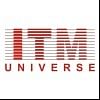

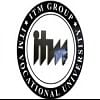

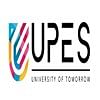

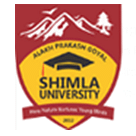



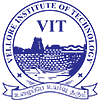




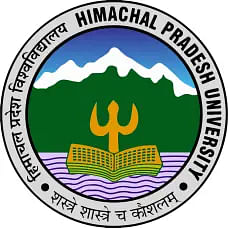


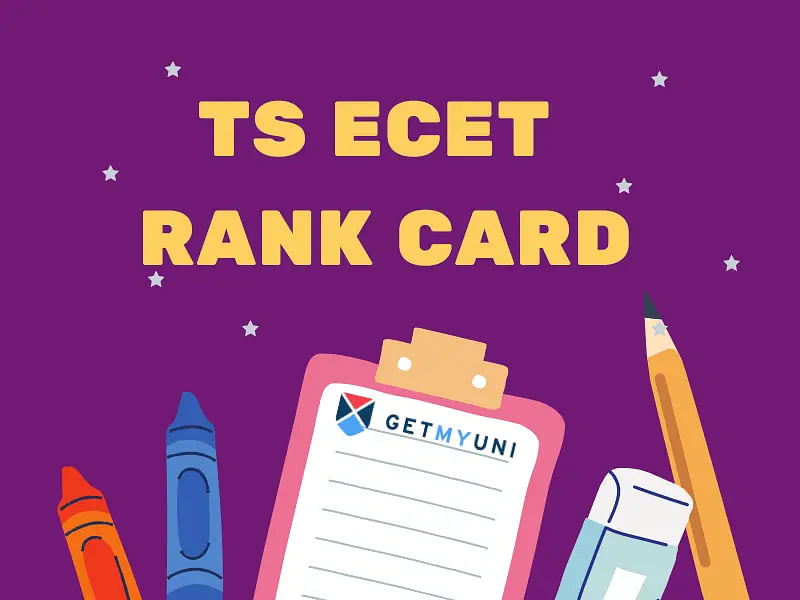

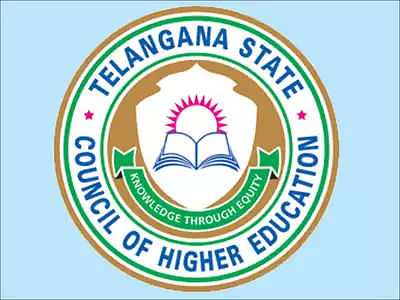



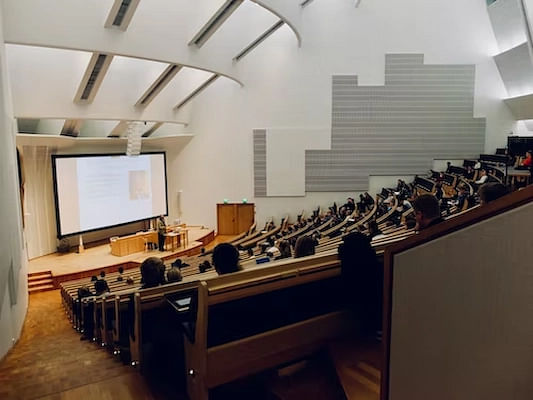





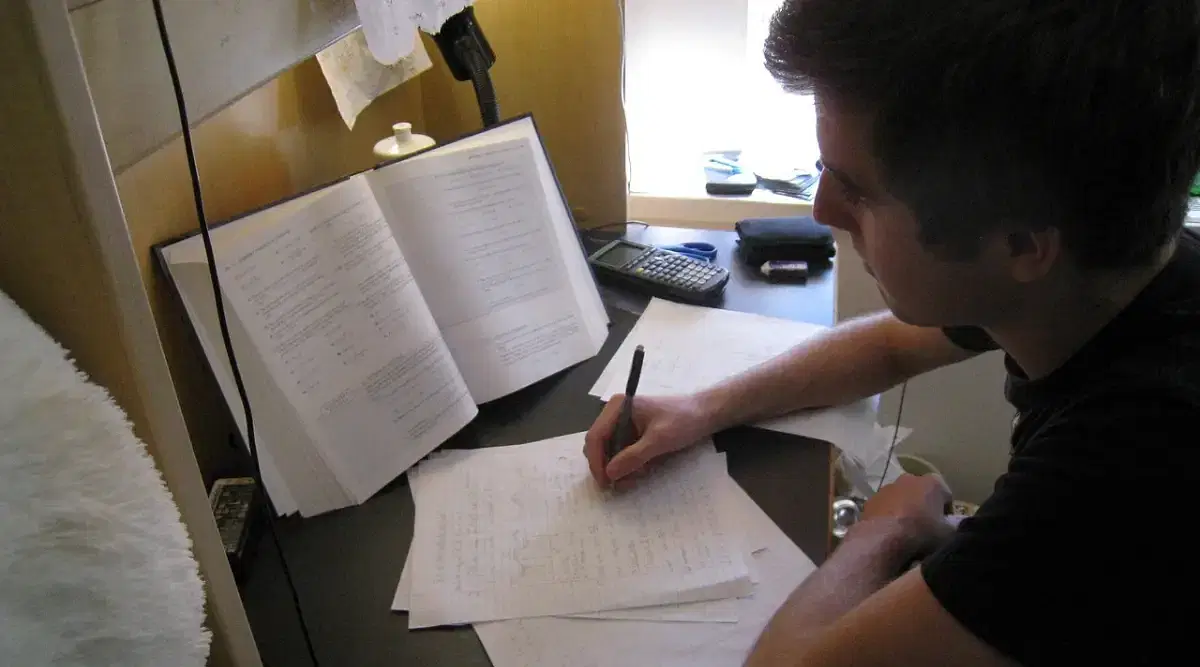










POST YOUR COMMENT